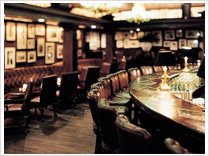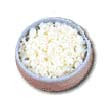Boys Before Flowers Film Location Tour
Kamis, 30 Juli 2009
Boys Before Flowers is a famous Korean Drama based on the Japanese manga series "Hana Yori Dango". This drama had been produced several times in different version, like in Japan and Taiwan, and now in Korea.
Boys Before Flowers or BBF starring Koo Hye-seon, Lee Min-ho, Kim Hyun-joong, Kim Beom, and Kim Jun. The drama still telling about the story between the high school most powerful boys "F4" and a normal school girl "Geum Jan Di".
The drama, got extremely huge popularity in Asia, not only because for the story and the good looking of main actor, but also for the beautiful scenes and magnificient shooting location. The drama featuring world exotic locations such as New Caledonia and Macao, as well as some of Korea’s most beautiful destinations.
Here is the list of some Boys Before Flowers shooting place, which now become korean tourist destination. The places including University, Country Club, Hotel, Villa, Department Store, and Resort.
1. Keimyung University

Keimyung University is the setting for the prestigious Shinhwa High School, the school attended by the main characters in the drama and which only children of the top 1% of the wealthiest families in Korea can attend. Keimyung University is situated in the city of Daegu. Its Western-style buildings and gorgeous natural surroundings make it one of the top ten most beautiful campuses in Korea, and consequently it’s a popular filming location for dramas and films. Major productions filmed at Keimyung University include the drama and the movie . Keimyung University consists of Seongseo campus and Daemyeong campus and the drama’s school scenes were filmed at both campuses. The beautiful Greek-style front gates and red-bricked buildings, along with Ji-hu and Jan-di’s secret hideout on the staircase, are all located in Keimyung University’s campuses.
Travel Information Telephone: +82-53-1330 (Korean, English, Japanese, Chinese)
Homepage: www.kmu.ac.kr (Korean, English, Chinese)
Seongseo campus: +82-53-580-5114, 1000 Sinsang-dong, Dalseo-gu district, Daegu city From Seoul station, take a train to Dongdaegu -> from Dongdaegu station, get on the subway -> get off at Keimyung University station on line 2
Daemyeong campus:+82-53-580-5785, 2139 Daemyeong-dong, Nam-gu, Daegu city From Seoul station, take a train to Daegu -> from Daegu station, take bus#202, 202-1, or 808
2. Damyang Dynasty Country Club

The Damyang Dynasty Country Club is the setting for the home of Shinhwa Group’s Gu Jun-pyo, as well as a film set in Hwaseong. This Italian villa style clubhouse features enormous luxurious buildings, which have even been called ‘the palace of the gods’. The country club was designed by the internationally renowned architect Andrei Visego, who recently designed the interior for a high-class hotel in Dubai. The buildings are furnished with the highest-quality natural marble floors, beautiful pillars replicating Athen’s shrines, luxury antique furniture, and famous works of art, and are sure to dazzle all visitors.
Address: Hwadong-ri San 79, Damyang-eup, Damyang-gun region, Jeollanam-do province
Contact: +82-61-380-7500
Homepage: http://dy.dynastycc.co.kr
Directions: Take a taxi from Damyang Terminal
3. Lotte Hotel World

Lotte Hotel World was the location for the homecoming party of Min Seo-hyeon, Ji-hu’s girlfriend. The party takes place in episode two, and Jan-di comes dressed up as Wonder Woman, to everyone else’s amusement. However, Min Seo-hyeon helps Jan-di change into a beautiful dress, and she captures the heart of Gu Jun-pyo. This scene was shot in the Topaz Room, the Lotte Hotel’s third floor banquet hall. Lotte Hotel World is located in Jamsil in Seoul and is part of a complex that includes an extra-large supermarket, a department store, and the Lotte World theme park. Conveniently it is directly connected to Jamsil station on subway line 2. The hotel can be reached directly from Incheon and Gimpo airports by limousine bus.
Address: 40-1 Jamsil-dong, Songpa-gu, Seoul
Contact: +82-2-419-7000
Homepage: http://www.lottehotelworld.com(Korean, English, Japanese, Chinese)
Directions: Connected directly to exit #3, Jamsil station, subway line 2.
From Incheon International airport (gate #4B or 11A) take a limousine bus (est. travel time of 1hr 20min, cost 13,000 won)
4. Gyeongju Shilla Millennium Park

Ragung hotel in Gyeongju was the setting for Yun Ji-hu’s traditional Hanok home. This high-class hotel consists of 16 separate houses, which are connected by corridors. The construction of the hotel required the largest number of specialized carpenters since the restoration of Gyeongbokgung Palace. Ragung was actually the name for the royal palace during the Silla dynasty. Guestrooms include private gardens and hot spring baths. The hotel is located in Korea’s very first historical theme park, the Shilla Millennium Park, and hotel rates include breakfast, dinner, and admission tickets to the theme park.
Address: 719-70 Sinpyeong-dong, Gyeongju city, Gyeongsangbuk-do province
Contact: +82-54-778-2000
Homepage: http://www.smpark.co.kr (Korean, English, Japanese, Chinese)
Directions: From Gyeongju station, take a bus heading towards Bomun Tourist Resort -> get off at the Bomun Tourist Resort Shilla Millennium Park
Hotel rates: 300,000 won ~ 460,000 won
Check in & check out times: 2:00pm, 11:00am
5. Shinsegae Department Store

Before Gu Jun-pyo and Jan-di leave for their vacation in New Caledonia, they go shopping at a department store. The main branch of the Shinsegae Department Store, in Myeong-dong, was the location for the scene in which Jan-di becomes the envy of girls everywhere. Gu Jun-pyo shows off his money and drags her around buying her all sorts of merchandise. This department store is divided into a main building and an annex. It stocks a wide selection of famous brand names. Luxury brands can be found inside the deluxe main building while the elegant annex building contains both domestic and international brands. Visitors to the Shinsegae department store can also enjoy shopping at Namdaemun Market and Myeong-dong, which are located nearby.
Address: 52-5 Chungmuru 1(il)-ga, Jung-gu, Seoul
Contact: +82-1588-1234
Directions:
* Exit #5, Myeongdong station, subway line 4 -> walk straight towards the Namdaemun Market then walk through the underground passageway
* Exit #7 Hoehyeon station, subway line 4 -> take the moving walkway all the way to the Shinsegae Main Building
Department store hours: 10:30am ~ 8:00pm
6. N Seoul Tower & Grand Hyatt Hotel

Seoul’s famous N Seoul Tower is the location where Gu Jun-pyo waits for Jan-di ion a freezing winter night. The two had planned to go on a date, but become trapped in the gondola on the way to the N Seoul Tower and have to spend the night there. On their way down from Namsan mountain the next day, the couple are photographed by the paparazzi and are thought to be coming out of the Grand Hyatt Hotel. The Grand Hyatt Hotel is the location where the Jan-di and Ga-eul and their boyfriends enjoy a double date on the ice skating rink. A spectacular view of the Hangang River and Namsan can be seen from the high-class Grand Hyatt Hotel. The hotel contains a total of 601 guestrooms as well as 11 restaurants and bars, a fitness center, and other luxury facilities.
Address:747-7 Hannam 2(i)-dong, Yongsan-gu district, Seoul
Contact: +82-2-797-1234
Homepage: http://www.grandhyattseoul.co.kr (Korean, English, Japanese)
Directions: From Incheon International airport, limousine buses run directly to the Grand Hyatt Hotel (5:45am ~ 6:35am; departs every 20~30min; 14,000 won) Free shuttle buses to the hotel also run from in front of the Itaewon Family Mart and the Migliore Shopping Mall in Myeongdong from 10:00am to 9:00pm
7. Artinus Farmer’s Table

The Farmer’s Table is a restaurant located on the first floor of the Artinus building in Heyri Art Village, which is designed to capture the simplicity and comfortable atmosphere of a farmer’s table. The walls are made of stone and wood, and the floors and tables are made from natural materials. The herb garden at the center of the restaurant makes visitors feel as if they are in the center of forest. This was the location for the posh cafeteria of Shinhwa High School. Visitors can enjoy refreshments and food while reading the complimentary books that are placed around the restaurant. There is also a children’s bookstore on the second floor and a gallery on the basement floor, where various exhibitions take place
Address: Heyri Artinus 1F, 1652-393 Beopheung-ri, Tanhyeon-myeon region, Paju town, Gyeonggi-do province
Travel Information Telephone: +82-31-1330 (Korean, English, Japanese, Chinese)
Heyri Homepage: http://www.heyri.net (Korean, English)
Directions: take bus #200 or 2200 from exit 2 of Hapjeong station, subway line 2-> get off at Heyri and go through gate #4 then make a right on the first 4-way intersection
Opening hours: 11:00am~10:00pm
8. Gyeonggi English Village, Yangpyeong Camp

The English Village in Yangpyeong was the setting for Shinhwa High School’s hallways, lobby, and exterior facades. First opened in April 2008, Gyeonggi English Village Yangpyeong Camp covers a 100.935㎡ area and has a total of 55 buildings, which are modeled on historical buildings in Virginia, United States. This educational English camp consists of condo-style dormitories, an artificial soccer turf, indoor gymnasium, health club, swimming pool, outdoor concert hall, observatory facilities, and more. The English Village was the location for the scene when Jan-di’s friend, Oh Min-ji, spills ice cream on Gu Jun-pyo’s shoes.
Address: Damun-ri San 25, Yongmun-myeon, Yangpyeong-gun region, Gyeonngi-do province
Contact: +82-31-770-1300
Homepage: http://www.yea.or.kr
Directions: From Dong Seoul terminal, take a bus headed towards Yongmun (est. travel time of 1hr) -> get off at Unbong Mart and walk straight past the overpass
9. Muju Resort

In the 12th episode, F4 and Geum Jan-di decide to take a ski trip. Jun-pyo gives Jan-di a special necklace, but she ends up losing it. Desperate, Jan-di heads off into the mountains alone to look for the necklace and gets lost in the dark. Fortunately, Gu Jun-pyo finds her, and they take shelter in a cabin, but they become trapped for the night due to the heavy snowfall. The ski resort that F4 and Geum Jan-di visit is Muju Resort, and they stay at the resort’s Hotel Tirol. As well as skiing in the winter, Muju Resort offers leisure activities throughout the year. It was also the filming location for the popular drama . Visitors can enjoy a gondola ride to the beautiful peak of Deokyusan Mountain or relax in the resort’s outdoor hot springs

























